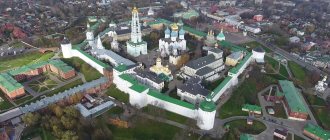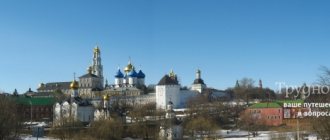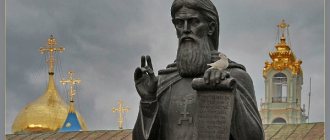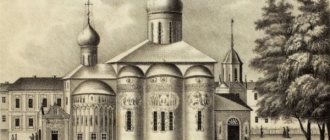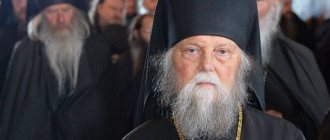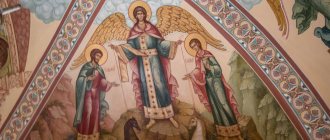MOSCOW, August 25. /TASS/. The Holy Synod of the Russian Orthodox Church (ROC) replaced the heads of the Chuvash, Buryat, Simbirsk, Saratov, Tver and Vologda metropolitanates, Vladimir Legoida, chairman of the Synodal Department for Church Relations with Society and the Media of the Moscow Patriarchate, told reporters on Tuesday.
“The head of the Chuvash Metropolis should be Metropolitan Savvaty of Ulan-Ude and Buryat, with his release from the administration of the Ulan-Ude diocese. <…> Metropolitan Joseph of Simbirsk and Novospassky will be the head of the Buryat Metropolis, with his release from the administration of the Simbirsk diocese. <…> Metropolitan Longin of Saratov and Volsk will be the head of the Simbirsk Metropolis, with his release from the administration of the Saratov diocese. <…> Metropolitan Ignatius of Vologda and Kirillov should be the head of the Saratov Metropolis, with his release from the administration of the Vologda diocese,” he quoted the resolutions of the Synod.
In addition, the Synod replaced the head of the Tver Metropolis. “The head of the Tver Metropolis is to be Archbishop Ambrose of Vereya, vicar of His Holiness the Patriarch of Moscow and All Rus', with his release from the post of vicar of the Sretensky Stavropegic Monastery in Moscow and rector of the Sretensky Theological Seminary. Metropolitan Savva of Tver and Kashin is destined to be the Eminence of Vologda and Kirillov, the head of the Vologda Metropolis,” Legoyda added.
The Holy Synod also replaced the chairman of the Synodal Department of Religious Education and Catechesis (OROiK) of the Moscow Patriarchate.
“To relieve Metropolitan of Rostov and Novocherkassk Mercury from the post of chairman of the Synodal Department of Religious Education and Catechesis, expressing gratitude to him for the labors incurred in this position. Appoint Bishop Eugene of Bronnitsky, vicar of the Patriarch of Moscow and All Rus', as the chairman of the Synodal Department of Religious Education and Catechesis,” he quoted the resolutions of the Synod.
Metropolitan Mercury (Ivanov), as Legoyda said, was also appointed to the position of general director of the Sofrino art and production enterprise. Previously, he was the acting director of the enterprise.
Moscow Theological Academy
The Holy Synod of the Russian Orthodox Church (ROC) also replaced the rector of the Moscow Theological Academy (MDA).
“They had a judgment about the state of affairs at the Moscow Theological Academy. Decided: His Eminence Bishop Pitirim of Zvenigorod, vicar of His Holiness the Patriarch of Moscow and All Rus', to be relieved of his post as rector of the Moscow Theological Academy. Appoint His Grace Bishop Theodorit of Skopin and Shatsk as rector of the Moscow Theological Academy with his release from the administration of the Skopin diocese and from the post of rector of the Ryazan Theological Seminary with an expression of gratitude for the work incurred,” Legoida quoted the resolutions of the Synod.
Bishop Theodorit (Tikhonov) has headed the Skopino diocese since his election to this position by the Synod on July 29, 2021. Bishop Pitirim (Tvorogov) on August 30, 2021 was appointed by the Synod as rector of the MDA with release from the management of the Dushanbe diocese.
Church of the Nativity of John the Baptist
The church was consecrated in honor of the Nativity of St. John the Baptist. He became famous for the fact that crowds of people came to him to listen to him. And after listening, they were spiritually transformed and repented of their sins.
Pilgrims still come to this temple for the Sacrament of Repentance and confess, thereby receiving relief and new grace-filled powers. Here Archimandrite Herman lectures those in need, driving out evil spirits from those possessed by demons. This is a rare and difficult monastic obedience, which requires the blessing of almost the Patriarch himself.
Various people come to lecture, sometimes out of idle curiosity, or just for company. But you can’t do that! There are rules for this that must be carefully followed! It happens that people with clearly unhealthy psyches come. But there are many who really need this specific help from Father Herman and receive it.
The small space of the temple, stuffiness, people pressing on those in front, inhuman cries, wild laughter, someone fighting, someone growling... The procedure is not for the faint of heart. Just imagine how hard this daily ministry is.
State of affairs in the Trinity-Sergius Lavra
Vladimir Legoyda also announced that Bishop Thomas of Bronnitsky will become the vicar of the Trinity-Sergius Lavra instead of Bishop Paramon.
“The Right Reverend Bishop Paramon of Sergiev Posad is relieved of his post as vicar of the Holy Trinity Lavra of Sergius, while retaining his duties as vicar of the Patriarch of Moscow and All Rus' with the title “Naro-Fominsk.” To appoint His Eminence Bishop Thomas of Bronnitsky as the vicar of the Holy Trinity Lavra of St. Sergius with the title “Sergiev Posad,” he cited the resolution of the Synod.
Bishop Paramon was appointed vicar of the Trinity-Sergius Lavra by decision of the Synod on February 26, 2021.
Bishop Thomas of Bronnitsky (in the world Vadim Demchuk) was born in 1983 in Moldova. In 2010 he graduated from the Moscow Theological Academy, and in 2021 he was ordained a bishop. In July 2021, he was appointed chairman of the commission under the Patriarch of Moscow and All Rus' on the bringing of shrines and curator of the program for the construction of Orthodox churches in Moscow. By the decision of the Synod of August 30, 2019, he was appointed to the position of first deputy chairman of the financial and economic management of the Moscow Patriarchate.
The meeting of the Holy Synod took place on August 25 under the chairmanship of Patriarch Kirill of Moscow and All Rus'.
Temples
Cathedral of the Holy Trinity
Built according to the design of B. Rastrelli, approved on March 12, 1756. Construction was completed in 1760. The five-domed cathedral rose in the center of the architectural ensemble of the monastery. The temple impressively towered above the rest of the monastery buildings. Its domes were widely spaced. The walls are divided by pilasters, and stucco decorations add special elegance. The interior decoration of the temple was distinguished by splendor and richness. On a high place until 1917 stood the image of the Holy Trinity, painted in 1840 by Acad. K.P. Bryullov. The main shrine of the temple was the miraculous icon of St. Sergius of Radonezh and two crosses with particles of the relics of St. Sergius and the Military Medical Center. Barbarians. During the war, the temple was badly damaged. The cathedral was blown up in 1962.
Temple of St. Sergius of Radonezh
| Trinity Sergius Primorskaya Hermitage. Church of St. Gregory the Theologian, 2012. Photo: Yu. Bulkin |
The Church of St. Sergius of Radonezh, the first in the desert, has survived to this day, but has been greatly altered. A wooden church transported from the estate of Queen Paraskeva Feodorovna on the Fontanka, where it was called the Church of the Assumption of the Blessed Virgin Mary, and consecrated in 1735 by Archimandrite. Varlaam, was replaced by a new one in 1756-1758. And in 1854, thanks to the financial assistance of Princess Z.I. Yusupova, completely rebuilt in the Byzantine style. In the temple there were the tombs of the Apraksins and Prince. Yusupov. The shrine of the temple was a silver reliquary with particles of holy relics received as a gift from the Patriarch of Alexandria Hierotheos, and a marble column with the image of the Nativity of the Virgin Mary, brought from the Jerusalem house of Sts. Joachim and Anna.
Church of the Resurrection
The fate of the Church of the Resurrection of Christ (founded in 1877, consecrated in 1884), a three-aisle basilica designed in the Byzantine style, the construction of which was led by the rector himself, Archimandrite, is sad. Ignatius, who painted and consecrated the lower chapel of the Archangel Michael in memory of the prince buried there. M.P. Golitsyn. In the temple there was kept a reliquary with particles of various saints, a wooden cross with a part of the Robe of the Lord and relics. It was closed in the 1920s and demolished in 1968.
Church of the Intercession of the Blessed Virgin Mary
It was laid on July 25, 1844 over the ashes of Princess Maria Ivanovna Kochubey (nee Baryatinskaya). Blown up in 1964
Church of St. martyr Valerian in a nursing home
In 1805, over the grave of Count Valerian Alexandrovich Zubov, by the will of the deceased, a church was founded in the name of St. Martyr Valerian with an invalid home for 30 people, “crippled warriors”. The temple was built by the architect Puncini. The temple was consecrated on June 21, 1809. In 1813, the body of M. Kutuzov, who died during a campaign abroad, was brought here to the desert. In 1919 the temple was closed. The building survived in a heavily altered state.
Church of St. Gregory the Theologian
| Trinity Sergius Primorskaya Hermitage. Church of St. Savva Stratilates, 2012. Photo: Yu. Bulkin |
Another tomb temple (a single-domed church, made in the Russian-Byzantine style according to the design of A.I. Stackenschneider, was founded in 1855 and consecrated on May 11, 1857 by Metropolitan Gregory in honor of the patron saint of the late Lieutenant General Grigory Grigorievich Kushelev. Preserved in a converted 1930s form.
Shchmch Temple Savva Stratelates
In 1859, above the holy gates in the building of fraternal cells according to the design of A.M. Gornostaev, the temple of the holy martyr Savva Stratelates was founded in memory of Savva Yakovlev, the famous metropolitan rich man of the 18th century.
Chapels
There were several chapels at the monastery. Two of them (the chapel of the Tikhvin Mother of God and the chapel of the Rudny Mother of God) were lost in the last war.
Hegumen of the Russian Land - Sergius of Radonezh
Back in the 14th century, on Makovets Hill, in a deserted place surrounded by impenetrable dense forests, the then very young Bartholomew, the future Venerable Sergius of Radonezh, decided to live as a hermit. Why did he, the beloved son of wealthy parents, make such a choice? In our tough and pragmatic times, it is difficult to understand such a preference.
But even in those days, this was also the choice of a few, amazing people, devoted to religious service with all their souls.
There were far more people who chose monastic life after some life tragedies or losses, when they gave up, lost the meaning of life, and lost their courage. Or people went into monasticism who by nature were poorly suited to everyday struggle, who were frightened by the full-blooded worldly life, and they took refuge from storms in the quiet harbor of the monastery. Or they went to atone for their sins, sometimes they went on a vow...
Rarely did anyone walk because God called him, like Bartholomew. Rarely whose soul lacked fullness in ordinary life.
But already among the first Christians there were people who voluntarily took additional vows and distributed their property to the poor. Later, such ascetics began to retire from the world to the mountains or deserts, so that there they could lead their strict lives without interference.
For the main struggle takes place not somewhere, but within the person himself, in the difficult improvement of his soul. This is the life – in solitude, work and prayer – that Bartholomew chose for himself. But it turned out that the hermit, who fled into the forests of the world, became the spiritual leader of the entire country. A monk who never took up arms is still called in akathists “a brave commander in battle.”
Monks flock to the remote desert to visit the holy hermit, and so a monastery arises here, which is now called Trinity-Sergius. Sergius becomes the abbot of the monastery.
Translated from Greek, this word means “leading”. The abbot of a monastery, ideally, should be much more than just a boss. Rather, he should be something like a father to the monks. Loving, caring, subtle, attentive, an example in everything.
However, in real life, not everyone can achieve such an ideal result. The Monk Sergius of Radonezh was such an abbot, and was a father, not only for the monks of the Trinity-Sergius Monastery he founded, but also for the Russian land. He was a man of the highest spiritual qualities and extraordinary modesty.
Patriarch Kirill once said that if now St. Sergius appeared among us, dressed the way we usually dress in our lives, then no one would pay attention to him. And this humble man becomes the force that unites the scattered principalities and that mobilizes the entire people to defend their Fatherland.
The Church calls Sergius venerable - that is, similar to Christ himself.
An aura of holiness surrounds Sergius even during his lifetime. He heals. He performs miracles. We, people of the 21st century, do not believe well in what cannot be touched or scientifically explained, but for the people of that time, the heavenly world is an integral reality. And the monks surrounding the saint constantly see the phenomena of another world accompanying him - then, during the service, an angel is present near Sergius, then during the liturgy, fire descends into the chalice, then, on the eve of the Battle of Kulikovo, in the radiance of bright light, the Mother of God herself with two apostles condescends to the saint ...
Russian land in the 14th century - cities razed to the ground, churches turned into ruins, villages of which only ashes remained, hundreds of thousands carried away. Moral savagery is everywhere - princes are ready to kill each other for the princely label.
And people no longer feel like Russian people, but residents of Vladimir, or Novgorod, or Pskov, and so on.
Sergius walked all over Rus' on foot, reconciling the princes, eradicating discord, uniting in the face of common disasters to jointly defend their fatherland. Uniting a mass of people into the Russian people. The Monk Sergius blesses Grand Duke Dmitry Donskoy for the upcoming battle for this community and sends with him two monks Oslyabya and Peresvet. Monks who should not take up arms, they are not fighting a simple war, but a battle between good and evil. The victory over the Tatar hordes on the Kulikovo Field was the beginning of the liberation of the country.
The Orthodox Church honors the memory of the saint on October 8, the day he reposed, and July 18, the day of the discovery of his relics. On them, Cathedral Square is a continuous sea of people, His Holiness the Patriarch arrives...

